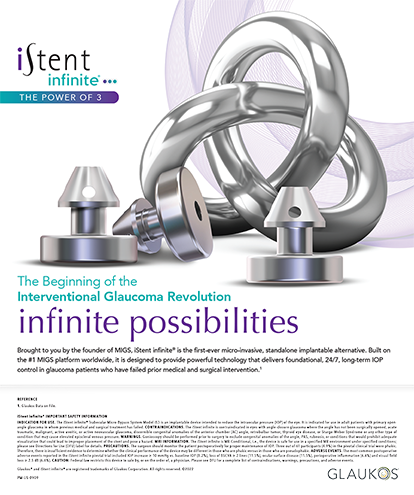When talking with US colleagues about ophthalmic devices and new technology, the FDA is often referred to as “Foreign Development Assured” or “For Development Abroad” and many variations on the theme. Reference is always made to how we are so fortunate in Europe not to have the FDA and hence can gain access to new technology that allows us to better treat our patients.
Meanwhile, the French breast implant manufacturer Poly Implant Prothèse, better known as PIP, was found guilty of selling implants containing industrial-grade silicone. This event has almost single-handedly been responsible for the changes occurring in Europe’s system. More regulations will be enforced that will soon remove most of the advantages that Europe currently enjoys compared with the United States in terms of the time it takes to get a device to market.
What are the changes in the pipeline, and when will they happen?
EUROPEAN COMMISSION'S PROPOSALS
Although preserving the innovation-friendly approach, the commission would like to revise the regulatory framework to ensure health and safety and smooth functioning of these pathways. The commission has been considering how to impose tighter controls on manufacturers of medical devices and notified bodies.1 A notified body is an organization in the European Union that has been acredited by a member state to assess if a product meets certain preordained standards.
The five areas that are affected by the changes are audits and quality management systems, unannounced audits, major changes to technical documentation and technical file assessments, major changes for notified bodies, and changes to contractual arrangements between notified bodies and manufacturers.
The following points apply in relation to the new legislation:
- The manufacturer’s premises and critical subcontractors and suppliers will need to be audited.
- Notified bodies will need to assess more critically whether the organizational structure and the qualification and competence of managers and staff are adequate to ensure compliance.
- Clinical evaluation of medical devices will remain a high priority, so manufacturers should expect their processes and their decisions and documented justifications to be challenged more often during audits.
- Manufacturerswillbeexpectedtouseallavailable sources of postmarket surveillance data including distributors, users, and patients.
- Notified body audits should be annual.
- Thequalitymanualandpoliciesmustdemonstrate that the manufacturer actively retains responsibility for all the directive requirements and all the critical processes.
UNANNOUNCED AUDITS
Another change has to do with unannounced audits, which will be carried out in a random manner once every 3 years. Manufacturers will have no prior notice, and most audits will last 1 day and involve a team of two or more auditors. Because the main manufacturing site will normally be the location of the unannounced audit, this will in some instances be the location of the critical subcontractor and not the location of the manufacturer. Unannounced audits and the accompanying testing represent the major additional direct cost to the manufacturer of these European Commission changes.
MAJOR CHANGES TO TECHNICAL DOCUMENTATION AND TECHNICAL FILE ASSESSMENTS
Manufacturers must ensure that all technical documentation and certification can be “unequivocally” related to device types and to individual products via a product identification system.
MAJOR CHANGES FOR NOTIFIED BODIES
Notified bodies will be subject to much more scrutiny than before, including an audit team comprising three different competent authorities and the European Commission. Surveillance of notified bodies will now include annual assessments of their reviews of manufacturers’ clinical evaluations. Additionally, notified bodies can be subject to unannounced audits.
CHANGES TO CONTRACTUAL ARRANGEMENTS BETWEEN NOTIFIED BODIES AND MANUFACTURERS
Agreed-upon periods of nonoperation will have to be defined when unannounced audits cannot take place. It will be the manufacturer’s responsibility to inform the notified body of any change of dates. The absolute right to make unannounced audits to the sites of manufacturers or any pre-defined critical subcontractors will be included in contracts.
PRIORITY ACTIONS FOR MANUFACTURERS
Manufacturers should review their control of all critical subcontractors and suppliers. Manufacturers should ensure that they have effective systems for informing their notified body of changes to their processes. Manufacturers should ensure that there are written procedures describing processes that will ensure compliance with regulatory requirements. Manufacturers should ensure that all technical documentation has been updated in line with current device design and manufacturing practice. Best practice for manufacturers would be to immediately review the recommendation document and undertake an internal audit/gap review of processes and technical documentation to identify any areas of weakness and then to implement an improvement plan before the first notified body audit in 2014.
CONCLUSION
The documents described herein impose new require- ments for notified bodies, more so than for manufacturers. The only requirement of manufacturers that have been following best practice is to institute procedures to manage unannounced audits. If manufacturers have fallen behind in terms of best practices, however, they will need to review and improve their processes in order to meet the new requirements.
Notified bodies are going to bear the brunt of the new legislation. Already, some notified bodies have dissolved, as they are not meeting the required standards. These changes are expected to take place early this year.
It therefore appears that the regulations will still be somewhat innovation friendly but may slow down the regulatory pathway in the process.
Arthur B. Cummings, MB ChB, FCS(SA), MMed(Ophth), FRCS(Edin), is a consultant ophthalmologist with the Wellington Eye Clinic in Dublin, Ireland. Dr. Cummings may be reached at abc@wellingtoneyeclinic.com.
- Legislation. Official Journal of the European Union. September 23, 2013. http://eur-lex.europa.eu/JOHtml.do?uri=OJ:L:2013:253:SOM:EN:HTML


